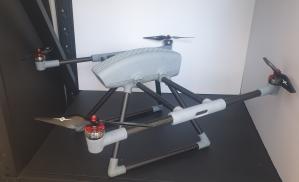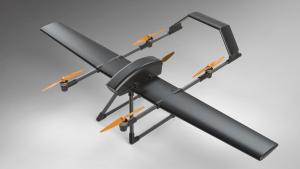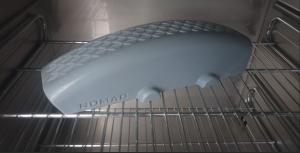UAE Company Unveils 3D Printed Drone Made with High Performance Resin
A prototyping company in the United Arab Emirates is 3D printing drones using resins, rather than typical FDM processes.
With Liqcreate resin and nTop software, we've achieved incredibly thin wall thicknesses of 500 microns.”
ABU DHABI, UNITED ARAB EMIRATES, May 23, 2024 /EINPresswire.com/ -- UAE-based aerospace engineer Phillip Keane, founder of Nomad Prototypes, has unveiled a 3D printed drone, which has been manufactured with one of the strongest resins in the world. Their first generation drone, powered by a 7000 mAh battery, can fly for 37 minutes without payload and 22 minutes with a 500-gram payload. — Phillip Keane (Founder)
The company is involved in researching a variety of different 3D printing methods, with the ultimate aim of producing the largest 3D printed plastic drone in the world. While it is popular among RC enthusiasts to employ FDM printing for drones, Nomad Prototypes are convinced that there are more optimum 3D printing processes for drone manufacturing.
The problem with 3D printing drones with FDM arises due to the anisotropic nature of FDM printing, where the printed part has differences in strength according to the part orientation. While this is acceptable for smaller drones such as multirotors and small planes, the weaknesses between the layers of FDM-printed parts become problematic when scaling up. Specifically, the complex dynamics experienced by a fixed wing aircraft means that the structural walls need to be printed thicker to compensate for the anisotropy.
In short, this means that the weight of the drone increases significantly with the thickening of the structure, yet the overall strength remains lower than what can be achieved with traditional composite manufacturing methods, such as fiberglass or CFRP.
These traditional composite methods, though strong and lightweight, are labor-intensive and costly, with inconsistent quality. Nomad Prototypes aims to enhance their drone manufacturing efficiency by reducing labor costs and maintaining quality through advanced 3D printing technologies.
Keane has researched multiple 3D printing methods, including FDM, SLA, SLS, MJF, and FGF, over the past decade. Their current roadmap to building the world’s largest 3D printed plastic drone involves the use of SLA (resins) and FGF (pellets).
The company’s first-generation drones, revealed this week, are small multirotor drones constructed using Liqcreate StrongX resin, a dual-cure photopolymer resin that undergoes UV and thermal curing for enhanced strength.
Their second generation resin drone will feature a modular design that can convert to a fixed wing/VTOL configuration, again utilizing strong resins and topology optimization for thin, durable wing skins.
“With Liqcreate resin and nTop software, we've achieved incredibly thin wall thicknesses of 500 microns,” Keane noted.
“The internal lattice structure supports the walls during printing, enabling much thinner skins than previously possible.”
The third generation will expand to a 3.2-meter wingspan, using the high-strength composite pellets. Their large-scale drone will have a maximum takeoff weight of around 15 kg, and will be optimized for low-speed flights, to reduce stresses on the airframe. The company plans to fly this aircraft for a Guinness World Record attempt.
"These composite pellets have a tensile strength that is comparable to aluminum," remarked Keane.
"When the 'weak' interlayer strength of your pellet printed parts is three times stronger than the best commercially available FDM filaments, then the problem of anisotropy quickly disappears. You can print thin walls while maintaining superior part strength."
Nomad Prototypes will continue refining their resin drone designs before scaling up to the pellet-printed versions. This will ensure that the company perfects the flight dynamics and the assemblability of their design at smaller scale before committing to the larger design.
Ultimately, the company believes that one day it will be possible to 3D print a composite aircraft that is capable of carrying a human being, and they see the scaling up of 3D printed fixed-wing drones as being necessary to achieving that aim.
“It’s certainly possible to 3D print a wing out of metal that could support the weight of a human being in flight, although it would be extremely expensive to do so at present”, said Keane.
“Given the advances in composite 3D printing, and even pellet printing, it’s not inconceivable that someone could 3D print a small composite aircraft capable of carrying a human in the not too distant future. Just 5 years ago, if someone would have told me that it’s possible to print pellets with strength comparable to aluminum, I would not have believed them. Yet here we are. The 3D printing industry moves very fast.”
Nomad Prototypes will showcase their project at the Make It In The Emirates pitch contest at the Abu Dhabi Energy Center on Monday, May 27th.
Phillip Keane
Nomad Prototypes
email us here
Visit us on social media:
Twitter
LinkedIn
TikTok



